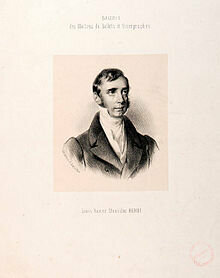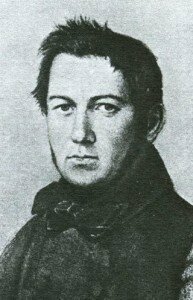![[Chao-Kang_ballet-pantomime_de_Louis_Henry_[...]Maleuvre_Louis_btv1b70015888 - Copy](https://interlude-cdn-blob-prod.azureedge.net/interlude-blob-storage-prod/2019/01/Chao-Kang_ballet-pantomime_de_Louis_Henry_...Maleuvre_Louis_btv1b70015888-Copy-204x300.jpeg) Louis Henry (1784-1836) was an exceptional French dancer, choreographer and ballet master. Born in Versailles, he started his career at the Paris Opera in 1803 but quickly got into heated competition with Louis Duport and Auguste Vestris. Vicious infighting forced him to leave the Opera two years later, and he became ballet master of the Théâtre de la Porte-Saint-Martin. In the process he managed to make a sworn enemy of the incomparable Pierre Gardel, and he had to hastily depart for exile in Italy. Finding a receptive audience in Milan, Naples and Vienna, Henry loved to stage pantomime ballets with decidedly exotic subject matters. Among his greatest successes we find “The Indian Sacrifice,” “The Warriors-Women of the Amazon,” “The Sultan,” and the immensely popular “Chao Kang.”
Louis Henry (1784-1836) was an exceptional French dancer, choreographer and ballet master. Born in Versailles, he started his career at the Paris Opera in 1803 but quickly got into heated competition with Louis Duport and Auguste Vestris. Vicious infighting forced him to leave the Opera two years later, and he became ballet master of the Théâtre de la Porte-Saint-Martin. In the process he managed to make a sworn enemy of the incomparable Pierre Gardel, and he had to hastily depart for exile in Italy. Finding a receptive audience in Milan, Naples and Vienna, Henry loved to stage pantomime ballets with decidedly exotic subject matters. Among his greatest successes we find “The Indian Sacrifice,” “The Warriors-Women of the Amazon,” “The Sultan,” and the immensely popular “Chao Kang.”

Louis Henry
![[Chao-Kang_ballet-pantomime_de_Louis_Henry_[...]Maleuvre_Louis_btv1b70013890 - Copy](https://interlude-cdn-blob-prod.azureedge.net/interlude-blob-storage-prod/2019/01/Chao-Kang_ballet-pantomime_de_Louis_Henry_...Maleuvre_Louis_btv1b70013890-Copy-189x300.jpeg) The youth once again escaped to a neighboring city, and became a servant in the governor’s kitchen. His real identity was soon discovered, and the governor was looking for an opportunity to restore the youth to the throne of his ancestors. When Chao Kang reached the age of 30, he organized a conspiracy and his soldiers marched to attack the usurper. The attempt was successful, and Chao Kang entered the capital to be crowned to the cheers of the people.
The youth once again escaped to a neighboring city, and became a servant in the governor’s kitchen. His real identity was soon discovered, and the governor was looking for an opportunity to restore the youth to the throne of his ancestors. When Chao Kang reached the age of 30, he organized a conspiracy and his soldiers marched to attack the usurper. The attempt was successful, and Chao Kang entered the capital to be crowned to the cheers of the people. 
Mikhail Glinka © Wikipedia
Mikhail Glinka: Variations on two themes from the ballet “Chao Kang”

